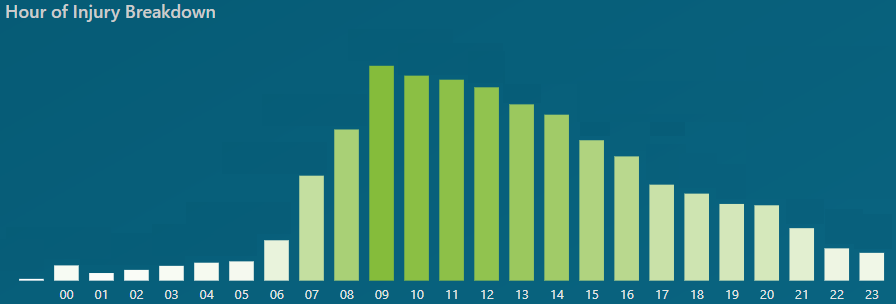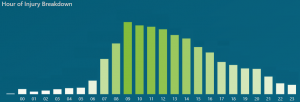Author: Tom Kelly, Operational Lead – Triage
Working in injury management for over a decade I’ve heard all the reasons why injuries occur. With access to Australia’s biggest injury hotline data I bust three of the most common myths.
The Moon
“The phone hasn’t stopped ringing, it must be a full moon,” A statement that would often make me laugh, when an effervescent Cogent Thinking Consultant I sat near used the moon to explain the reasons why she was having an unusually busy day. The team would then promptly Google the moon phase, or someone would say “yes I saw a full moon last night!”. Up until this point, the team only had anecdotal data relating to this topic; a general vibe that it was busier during a full moon. I was curious and have access to a data analyst. Some may say I have wasted her time, you be the judge.
The question: Does the number of injuries increase when there’s a full moon?
The data: In January 2021, there were 50% more injuries on the full moon than the daily average for the month!
Figure 1: January 2021 and correlation
However, after January 2021, the correlation between injury rates and full moon phases started to crack. The data shows there is no increase in injury rates during a full moon.
Answer: Myth Busted! William Shakespeare was right when he wrote, “do not swear by the moon, for she changes constantly…”
Occupational Violence
The question: Is there a relationship between the full moon and occupational violence injuries?
The data: The biggest variation between when occupational violence injuries occur and the moon phases is 3%.
Figure 2: Moon phase with percentage of total occupational violence injuries.
The answer: Myth busted! There was a maximum 3% change in data between all the moon phases and occupational violence injuries, which is not a statistically significant percentage.
Public Holidays
Another theory that gets thrown around in injury management circles is more injuries occur prior to long weekends.
The question: Do more injuries occur prior to public holidays?
The data: I reviewed Cogent Thinking’s data from the two days prior to the Easter and Christmas Public Holidays against the average number of injuries for that month.
Figure 3: Pre-public holiday injury rates
The answer: Myth confirmed. WorkSafe Victoria is aware of these statistics and has released a ‘Let’s put 2021 safely behind us’ campaign encouraging people to slow down and not rush. Often the lead up to long breaks is a busy time for employers and employees are rushing to meet tighter deadlines and complete projects which leads to accidents occurring.
When do injuries actually occur?
Now that we have ruled out the full moon, when do injuries actually occur? Most injuries occur between 9:00am-5:00pm and gradually decrease throughout the day.
Figure 4: Volume vs time of injury
The most common time for injuries this year was between 9:00am-10:00am. This raises the questions:
- Why are people more likely to be injured at the start of the working day?
- What can employers do to support their employees to not get injured?
There are many answers to these questions. One solution to this problem is to consider reviewing what tasks employees are completing at the start of the day. Identify the hazards and use the hierarchy of risk control to eliminate or substitute the hazard.
The takeaway.
Don’t plan your injury management policies around myths and invest in programs with proven results. Focus your workforce on being careful leading up to the Christmas break. Control your risks by leveraging experts like Cogent Thinking and do not leave it up to the stars.
.




